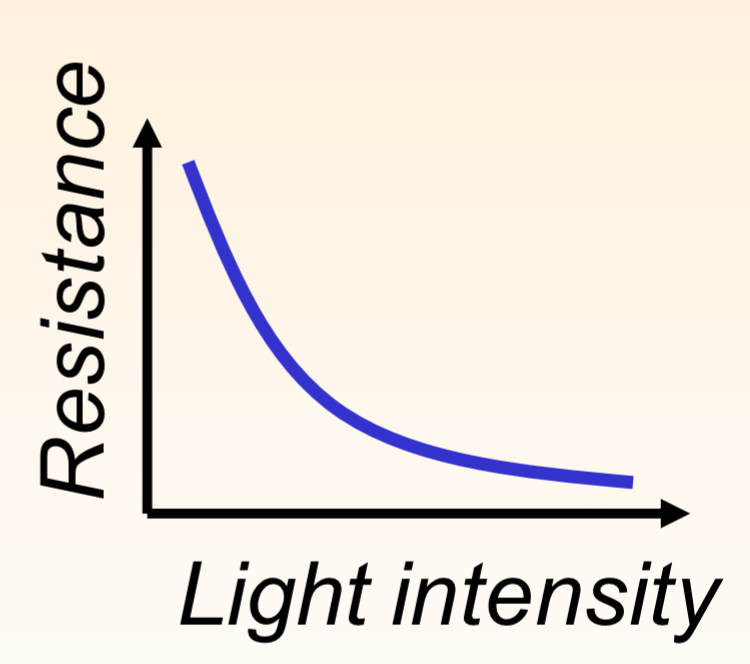For an LDR, does an increase in light intensity increase its resistance and thus increase the potential difference that goes through it?
1 Answer
An increase in light intensity decreases the LDR’s resistance and therefore the potential difference across the LDR will decrease (if it is in a potential divider).
Explanation:
Here’s an LDR resistance v light intensity graph

You can see from the graph that as light intensity increases the resistance of the LDR decreases. Resistance of the LDR is highest in the dark.
Potential Difference (p.d.)
Potential difference is across something; not through something. If an LDR is connected in series with a fixed resistor (i.e. the circuit is a potential divider) and the resistance of the LDR increases then its share of p.d. will increase. That is, p.d. across the LDR increases and p.d. across the fixed resistor will decrease. (Both p.d.s always add up to the terminal p.d. of the power supply.)
An increase in light intensity decreases the LDR’s resistance and therefore the potential difference across the LDR will decrease.

